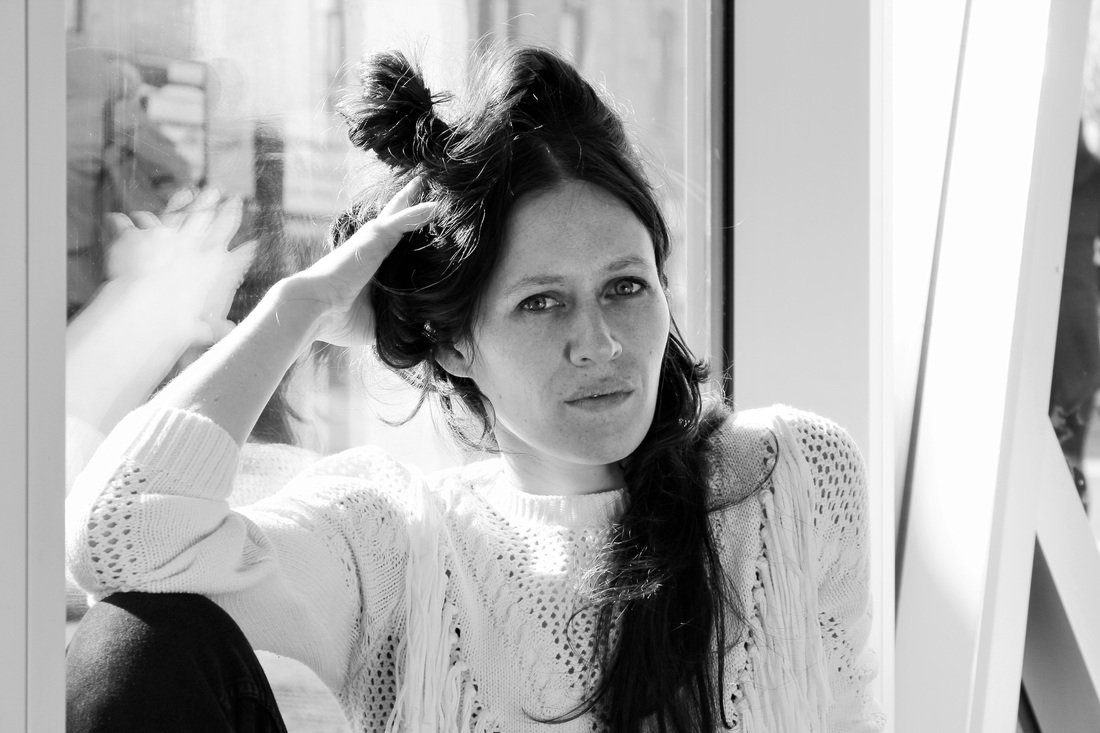|
Lara Kramer is an Oji-Cree (Ojibwe and Cree) choreographer and performer whose work is intimately linked to her memory and Aboriginal roots. She received her BFA in Contemporary Dance at Concordia University. Working with strong visuals and narrative, Kramer’s work pushes the strength and fragility of the human spirit. Her work is political and potent, often examining issues surrounding Canada and First Nations Peoples. Kramer has been recognized as a Human Rights Advocate through the Montreal Holocaust Memorial Centre. Her work has been presented at the OFFTA, The First Peoples Festival, Festival Vue Sur la Relève, The Talking Sticks Festival, Canada Dance Festival, The Banff Centre, MAI (Montréal, arts interculturels), Public Energy, Planet IndigenUS, Dancing on the Edge, Tangente, New Dance Horizons, Alberta Aboriginal Arts, The Expanse Movement Arts Festival and Native Earth Performing Arts. Her acclaimed work Fragments, inspired by her mother’s stories of the Indian Residential Schools of Canada, has brought her recognition as one of Canada’s bright new talents. She has been on the faculty of the Indigenous Dance Residency at The Banff Centre.
Why do you move? It’s an expression of my history, my storyline, my connection to and understanding of this current place and time. Of what people have said about your work (good or bad), what has most stuck with you? The need of these stories having a place, of carving a space for the stories I tell; especially specific to Native Girl Syndrome, just the importance it has in our present time. What are you most proud of? Being a mother. Speaking of my work, it’s an interesting process; I always feel like I’m navigating this place of decolonization. I feel proud in that my process allows me to further understand what the impact of the residential schools – but it goes beyond that – the impact cultural genocide has had on my lineage. That also goes back to the proudness I feel being a mother. My work allows me to deconstruct all that and understand it and process it. How do you feel about dance criticism? I think it’s good. When we shy away from that process of having dance criticism, there’s something… The politeness, you can feel it sometimes. That’s the good part of art, when you can dig deep and critique it on many levels. What’s the best piece of advice you’ve ever been given? I think just being told that dance is a lot of hard work. I don’t know if that’s advice or more “That’s the reality.” Maybe the advice that was given and that I feel has resonated to be true is that what I source as a choreographer isn’t found in the studio at all. The advice early on was that my life experience, my experience out in the world, outside of the studio, is what is gonna be my food. Maybe that sounds basic or “no kidding”, but when you’re brought up in that classical ballet world, that sort of “you gotta be in the studio to be creating”, maybe that idea comes off as foreign. It sounds weird, but the more time I take away from the form and actually just being in situations connects me to something more interesting in my work. What does dance most need today? Tolerance. It’s tricky because I think it’s important that art speaks for itself, but being a First Nations artist is always something that becomes the focus or a thing that has to be explained or justified or contextualised, and there’s not always a place for it in mainstream dance. Like anything and any art form, there’s still a hierarchy that takes place and I think that’s unfortunate when we’re talking about art. It’s limiting. Also – this is a personal preference and not a comment on a specific community – it’s this feeling that even the idea of dance… What I’m also interested in and where my work has shifted is that, dissecting it and breaking it down – again it’s going back to tolerance – I’ve had people say my work is not dance enough, whatever that means. I’m working with many elements and for me the expression is “that of the body.” To sum that up, it’s just that idea of breaking down those hierarchical systems and looking at art as something broader and limitless. Given the means, which dance fantasy would you fulfill? If I had all the means, it would probably be an odd place to exist as an artist. I have a fantasy – and it doesn’t seem intangible – but it’s more connecting to the wisdom and knowledge of traditional dance and that deeper link to the land and ancestors. What motivates you to keep making art? I’m always investigating this undercurrent of violence and trauma that exists in Canada that is the result of what has happened and continues to happen to First Nations people. My motivation and desire is to try to embed myself into a more indigenous perspective so that that becomes more of what’s expressed. The trauma is so deep and there are so many layers, generation after generation, that it feels like an endless journey. Native Girl Syndrome March 10-19 at 7:30pm www.espacelibre.qc.ca 514.521.4191 Tickets: 25$ / 30 years old and under: 22$
1 Comment
|
Sylvain Verstricht
has an MA in Film Studies and works in contemporary dance. His fiction has appeared in Headlight Anthology, Cactus Heart, and Birkensnake. s.verstricht [at] gmail [dot] com Categories
All
|

 RSS Feed
RSS Feed